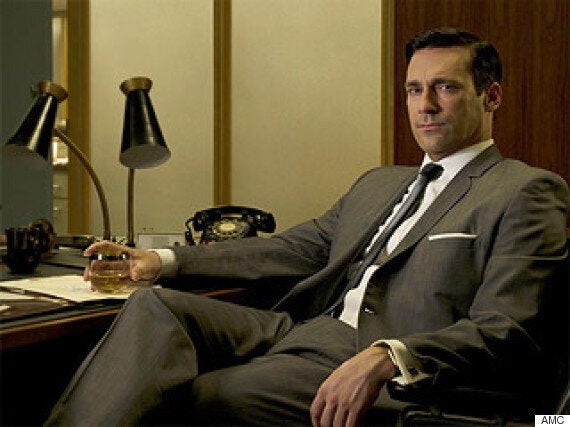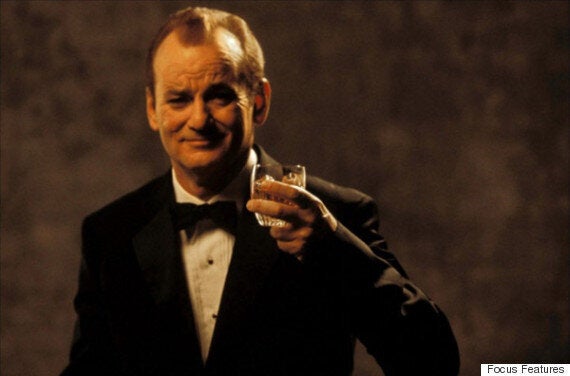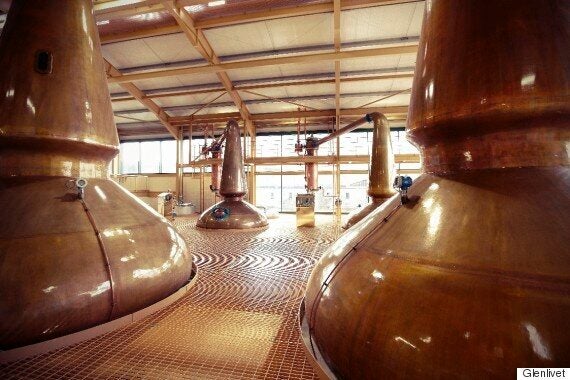When 'Mad Men's Don Draper reaches for the bottle in his desk drawer, you know the chasm between his public persona and private self has come perilously close to vanishing. When Rooster Cogburn offers a fellow traveller a lug from his flash in 'True Grit', it's a gesture of solidarity against the harsh Wild West. When Bill Murray's Bob Harris waxes lyrical advertising Suntory in 'Lost in Translation', it's a sign of how, even in Japan, the benefits of a wee dram are not to be overlooked.

Like much else about him, Don Draper's whisky isn't quite the best - it's a light blend
Whisky is everywhere on screen - to provide comfort, contemplation and comradeship as the story requires, which is all enough to make you wonder - what's so special about whisky after all, and particularly its Blue Riband offering, the single malt - a deceptively humble-sounding treasure in comparison with the blended, bootlegged and borrowed versions above?
To find out, we have to dig into the myths and mystery of the Scottish Highlands, where the most revered distilleries strive to meet the ever-increasing demand of a growing international market, while continuing to honour the legends of their land.
Ian Logan, International Brand ambassador for Chivas Brothers, explains, “Whisky is part of the fabric and identity of Scotland, something that in the early days was made by the people for the people.
“It was on a par with the perceived right to have a salmon from the river or a stag from the hill.”

Bill Murray extolling the virtues of whisky for a Japanese audience in 'Lost in Translation'
He goes on: “At this time Scotland although a well-educated land was still very poor and the creation of the whisky was almost a cash generator for the farming Scots and would have been “exchanged” for food, drinks or even clothing during the hard time of the early 19th century.
The Glenlivet are digging into their history with their latest offering – single malt Founder’s Reserve – and a visit to their distillery at Ballindalloch outside Aberdeen reveals how much the past is blended with the present. Inside, the eight lantern-shaped stills are vast and modern, responsible for producing enough whisky for nearly six million bottles a year, but the oak casks where the liquid matures are ancient and bespecked with many an ancient footprint. History is never far away, and it's the same for the 120 or so distilleries throughout Scotland.

Where the magic happens - vast lantern-shaped stills where nearly six million bottles a year are created
On the bleak but beautiful hillside beyond the grey roof of the main building, a monument celebrates the fact that, here in 1824, tenant George Smith became the first ever highlandman to obtain a licence to distil whisky legally. Against a blistering wind, Ian Logan provides some background. “After the Jacobite Rebellion (1745-6) and the Highland Scots being defeated in battle at Culloden by the English (and Lowland Scots), there was an increased dislike for all things English, which fired the belly of the Scots so the idea of paying further taxation to the English from their production did not sit well with the Highlander.” (Other political parties are available.)
George Smith was helped in his campaign by a benevolent landlord, Alexander Gordon, 4th Duke of Gordon, who, so local legend has it, even lent his pal George a pair of pistols to defend himself from aggrieved rival whisky-makers.
A trip to the beautiful seat of Gordon – a proper castle straight from central casting with a Walled Garden the size of several football pitches – finds direct descendant Angus Gordon Lennox holding court. Despite his family’s ancient kinship with whisky, it turns out Angus - a gentleman whose crisp tones are as English as his trousers are unmistakably Scottish - has branched out somewhat. His own efforts in the distillery on the estate have resulted in award-winning gin, that recently took two top international awards.
Despite this, it transpires he shares with the tireless distillers up the road a soft spot for the liquor first brewed illegally on the hilltops just beyond his castle wall.
“What makes whisky so special?” he muses. “I think it’s the fact that, even with so many brands, varieties, years, proofs (there are an estimated 500 brands in the world, each with their own prized catalogues), each one is slightly different. And you can spend a lifetime discovering your favourite, or chasing an elusive one. And thus are passions and preoccupations born.”
Ian Logan agrees. He says, “It’s not just a brand to the people involved in making it, it is a passion, a privilege and part of what makes Scotland so unique. Success for whisky is success for Scotland and that should benefit all of us.”
And, whatever Don Draper and Rooster Cogburn might pour into their glass, he keeps a special place for that holy of holies. He says, “Trading up to a single malt will let others know that things are good.”
You can visit Gordon Castle - info here. And find out more about The Glenlivet's Founder's Reserve here.